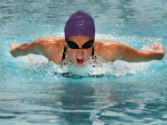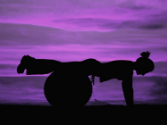 1. Cool down. Cooling down (not stopping completely) is crucial after exercise. Continuing to move around at a very low intensity for 5 to 10 minutes after a workout helps remove lactic acid from our muscles and may reduce muscle stiffness. If you have been running, slow it down, then walk for 5 minutes. Don’t do what I did the other day and run to your car immediately after your long run without appropriately cooling down (I was late to getting #6 to a practice and couldn’t stay for a cool down – I really felt the stiffness almost immediately and was sore for a good 24 hours).
1. Cool down. Cooling down (not stopping completely) is crucial after exercise. Continuing to move around at a very low intensity for 5 to 10 minutes after a workout helps remove lactic acid from our muscles and may reduce muscle stiffness. If you have been running, slow it down, then walk for 5 minutes. Don’t do what I did the other day and run to your car immediately after your long run without appropriately cooling down (I was late to getting #6 to a practice and couldn’t stay for a cool down – I really felt the stiffness almost immediately and was sore for a good 24 hours).
2. Replace fluids. Drink a bottle of water (besides the one you hopefully had during the workout) right after the workout. If it has been an especially intense workout, or a long run, etc. (1.5 hours or more) drink a recover drink like EFS or Endurox.
3. Eat well. A banana is a great post workout snack because it is easily digested and provides quick energy after a hard workout. About 15 minutes after the banana, try a protein/carb mini meal such as a bar or peanut butter on whole grain bagel, etc. It’s best to eat something (carb/protein combo) within 60 minutes of finishing a workout to refuel and replenish lost nutrients.
4. Stretch. Dynamic stretching like high knee jumps, butt kicks or side shuffles are great pre-workout, but afterwards static stretching works best. Hamstring, quad, and IT band stretches are all important for after exercise, especially running and biking.
5. Foam roll! The foam roller not only stretches muscles and tendons but it also breaks down soft tissue adhesions and scar tissue. By using your own body weight and a cylindrical foam roller you can perform a self-massage or myofascial release, break up trigger points, and soothe tight fascia while increasing blood flow and circulation to the soft tissues. About 15 minutes post workout is fine unless you need to work a particular area a little more.
6. Use Ice. Some athletes swear by an ice bath after a hard workout. If you aren’t quite that tough (I’m certainly not), then try contrast water therapy post workout. Studies have shown that going from hot water to cold water (while in the shower) in time intervals after a hard workout can reduce and improve the recovery of functional deficiencies that result from delayed onset muscle soreness (DOMS).
7. Sleep! Need I say more about this one?
8. Take a day off. Actually planning a day or two off each week is just as important for your training as your actual training. Even though most of us know that getting enough rest after exercise is essential, we can still over train and feel guilty when we take a day off. But the body repairs and strengthens itself in the time between workouts, and continuous training can actually weaken the strongest athletes. Rest days are critical to sports performance for a variety of reasons. Some are physiological and some are psychological. Rest is physically necessary so that the muscles can repair, rebuild and strengthen. Even for recreational athletes (that’s me) building in rest days can help us to maintain a better balance between our home life, our work life and our fitness goals.
9. Listen to your body! Often times we just keep moving, even when our bodies are screaming at us to stop. The last three (#7, #8, and #9) are all interrelated and are vital for performance and for maintaining fitness. The following are
common warning signs and symptoms of overtraining syndrome:
Washed-out feeling, tired, drained, lack of energy
Mild leg soreness, general aches and pains
Pain in muscles and joints
Sudden drop in performance
Insomnia
Headaches
Decreased immunity (increased number of colds, and sore throats)
Decrease in training capacity / intensity
Moodiness and irritability
Depression
Loss of enthusiasm for the sport
Decreased appetite
Increased incidence of injuries.
A compulsive need to exercise
All of these symptoms (especially when they occur with each other) can be your body screaming…Listen to it! Most of us can recall a time when we didn’t listen and regretted it. Injuries are often the final straw and could have been prevented if we were really paying attention! Not too long ago I had foot pain that I hadn’t experienced before. I didn’t do much about it and before long, my IT Band joined in and soon my always sore hamstring started to join the pain party and began to interfere in my workouts. Yikes…it was like a full assault. I ended up having to take about a month off and still feel those residual effects of overtraining ( even though it’s been at least five months). Its not always easy to listen and respond to our bodies when they are telling us to back off. We are on roll, and can’t be bothered with rest and time off. But what I have had to learn the hard way is that our bodies eventually will have the last word either way. So we can either be preventative or face injury. If we can be more attuned to what our bodies are saying and what they need, we can better avoid serious injury.
What would you add to the list?





Speak Your Mind